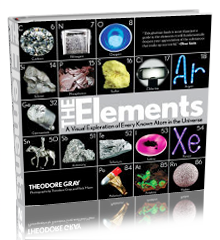Titanium e-beam window. | |||
| Sample Image | Spin Video | QuickTimeVR Rotation | |||
| Titanium e-beam window. This is a small section (about 5 inches long) of a much longer (4-5 foot) titanium window from a 5 million volt Dynamitron. A Dynamitron is a large vacuum tube (by large I mean 4 stories tall) designed to create a beam of high energy electrons that can be used to do useful things like cross-link plastics or create Lichtenberg Figures. In order to do these things the electrons have to exit the vacuum tube and enter the surrounding air, where the objects to be irradiated are located. That's where the window comes in. What's needed is a material that can seal off the vacuum tube while at the same time allowing the electrons to pass through with minimum loss of energy. You might not immediately think of metal as a good material for this since it would seem, at least to me, that the electrons would just hit the metal and be conducted away. But apparently when they are going fast enough they blast right through. This is quite thin foil, presumably just barely strong enough to withstand the pressure of the surrounding atmosphere. In use it is stretched tightly in a frame, bowed in quite a bit by the air pressing in to form a concave cylindrical shape. Here is a picture of the bottom end of the Dynamitron showing the horn where the electrons exit. The window made of this material is located right at the bottom of the triangle-shaped object: You can see the row of bolts that hold it in place. Underneath the horn you can see the carts that transport material to be irradiated under the beam. If the machine were switched on when this picture was taken you would see intense blue light from the exiting electrons hitting air molecules, and I would most likely be dead from x-ray exposure. Source: Kent State NEO Beam Facility Contributor: Kent State NEO Beam Facility Acquired: 8 December, 2007 Text Updated: 16 March, 2009 Price: Donated Size: 5" Purity: >99% | |||
|

